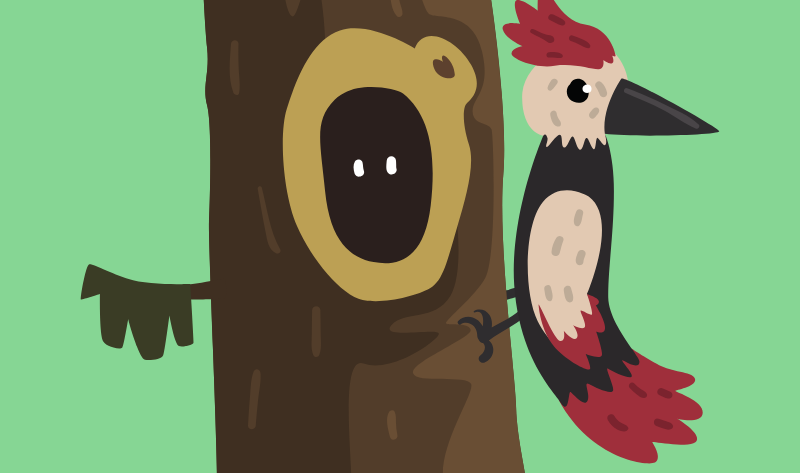Woodpeckers can wreak havoc on building enclosures. Found across the globe, woodpeckers traditionally peck holes into trees to find food, make nests, and communicate. However, woodpeckers and other pecking birds, such as flickers, can mistake Exterior Insulation Finish Systems (EIFS) for wood and cause building damage. Woodpeckers are very territorial and defend their domain by tapping on materials that produce the “right sound.” EIFS is one of those materials. Not only is damaged EIFS an eyesore, it can also make a building vulnerable to water intrusion, mold, and/or pest infestation. Most damage occurs during the breeding season, March through May, when the birds are at their most territorial.
EIFS is comprised of a water-resistive barrier that covers the exterior substrate (often plywood or oriented strand board [OSB]), a drainage plane, a rigid insulation board, a base coat, a mesh of glass-fiber embedded in the base coat, and a finish coat. Woodpecker damage is consistent with circular holes of various sizes through all or most of the layers, down to the substrate. Woodpeckers tend to peck at secluded and shaded areas such as eaves, decorative trims, and ledges. When EIFS is substantially damaged, often the only remedy is to replace the entire affected panel. Woodpeckers will return annually, causing damage year after year. Even if they don’t return, other small birds will often make a nesting site in any large enough hole that is not repaired.
Common solutions include using plastic hawks or owls, rubber snakes, metal screens, mylar tape, as well as “trap and release” programs. All of these have proven less than effective. Woodpeckers are also classified as migratory, non-game birds and therefore, are protected from lethal means or nest destruction.
Newer solutions to reduce bird damage include strengthening the mesh matrix, hardening the finish and base coats, or both. One such product, EIFS “Armor,” addresses the problem from both fronts by using a diamond mesh system with an acrylic hardener additive. Some EIFS manufacturers have added a repellant into their products to make them less attractive to woodpeckers. BeakGuard by Stuc-O-Flex tries to solve the issue by adding a blend of ingredients into their finish coat that creates an unattractive taste to the birds, and acts as a deterrent. Also, they report that their blend is stronger and more durable than other non-treated EIFS finish coats.
None of these methods are fool-proof, but they may lower the lifetime maintenance costs and keep buildings looking better for a longer time.
Tagged In:
Building Enclosure Design & Consulting
